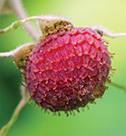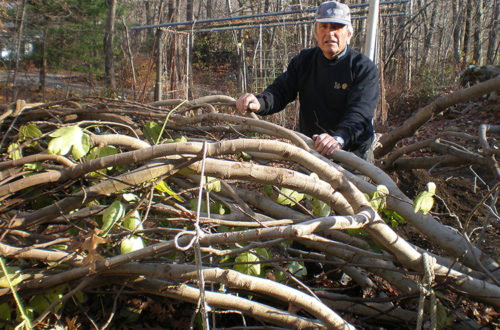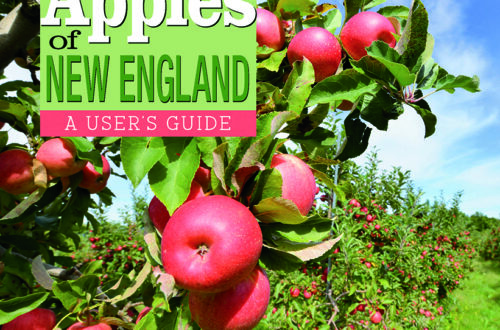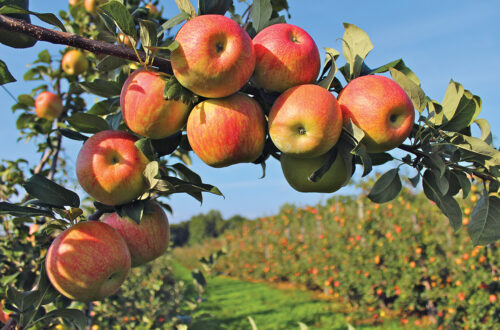Text and Photos by Dan Jaffe Wilder
This story previously appeared in the newsletter of the Ecological Landscape Alliance and is reprinted with their permission. Check them out at ecolandscaping.org
I remember when I first started growing food; there was a point where I was deciding whether to grow raspberries (Rubus spp.) or not. On one hand I loved the taste of raspberries, on the other hand I was worried about how raspberries grow, namely they grow like raspberries. They quickly colonize and the colony is filled with spines making management a challenge.
I’ve learned quite a bit since then, and raspberries are easily one of my favorite crops that I grow today. In addition to the red raspberry (Rubus idaeus), the genus includes black raspberries (Rubus occidentalis), blackberries (Rubus allegheniensis), and flowering raspberries (Rubus odoratus).
In fact, depending on how you define the Northeast region, and whose taxonomy you follow, there are over 50 different species of brambles in the Northeast. Some of them run quickly, some don’t run at all, some are tasty, some not so much, there are armed species and thornless ones, they grow in bogs, meadows, forests, and alpine zones.
To lump the whole group together is an unfortunate and yet common mistake. Sticking to the aforementioned four species, one doesn’t run at all, one doesn’t have thorns, one grows in the shade, and they all taste great.
Red Raspberries (Rubus idaeus)
Red raspberries (Rubus idaeus) are your classic raspberry and represent the bulk of the raspberries we run into at grocery stores and farmers markets. They are typically red but can be purple and yellow as well, they usually run rhizomatically (though some varieties run less), and they are armed with spines (though there are spineless varieties).
They are my favorite species from a taste point of view, a lovely combination of sweet and tart and the colors can be phenomenal (we eat with our eyes first). Their running nature turns plenty of people off but with good planning and practice they can be much easier to handle than many folks assume.
I recommend planting them in 18-24 inches wide rows and I cut anything that pops up outside of the designated row. This can be accomplished by hand but a brush cutter or mower makes quick work of it. Be relentless about it and your row will continue to be productive, let it go and you’ll find the center thinning out. I perform this maintenance two to three times a season.
In the early spring, before budbreak, I’ll get into the patch and cut any stems that produced fruits down to the ground. Red raspberries produce fruits on second-year canes (primarily) and this annual pruning keeps the patch productive. Everbearing varieties will fruit on first-year canes and can be
cut back entirely but I simply treat all my plants as described above to keep things simple.
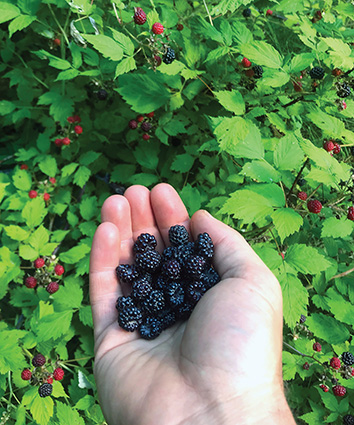
Black Raspberries (Rubus occidentalis)
If this sounds like more work than you want to commit to I have a phenomenal solution for you; grow black raspberries (Rubus occidentalis). Though closely related taxonomically and with flavor that is comparable (though definitely not the same, typically being less tart than the red raspberries) the greatest difference between the red raspberry and the black raspberry is how the plants grow.
Black raspberries don’t run! They tip layer, a process of vegetative reproduction that is significantly slower (and from a gardener’s point of view much easier to handle) than the rhizomatic nature of red raspberries.
My favorite method for growing these plants is in hillocks. I make a pile of material (purposefully vague, you can use good soil or a combination of soil with aged woodchips, compost, manure, leaves or just about any other organic material). This not only provides great nutrients but also raises the plants off the level ground further reducing their ability to tip layer.
Tie your plants (I like three plants per hillock) to a central stake and you can further reduce any layering potential. Pruning is the same as the red raspberries in early spring.
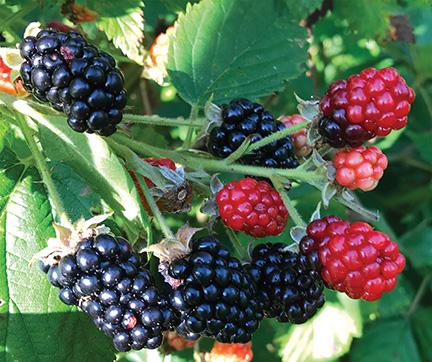
Blackberries (Rubus allegheniensis)
I grow my blackberries in a manner like the black raspberries (i.e., in hillocks). They won’t run like a red raspberry but will send out new stems from the central root system more often than the black raspberry.
Of all the species, the blackberries vary the most from one variety to the next and some only need an annual pruning while others need to be pruned twice or even three times a season. Regardless of growing-season pruning they receive the same dormant season (early spring) pruning as described
for red and black raspberries.
When comparing the three species’ flavor, black raspberries are often considered the sweetest, lacking the tart component of the red raspberries. Blackberries demonstrate a sweet/tart flavor, sometimes with a slight bitterness as well likely as a result of the pith which stays with the fruit once picked (it remains on the plant for the red and black raspberries).
I don’t tend to work with cultivated varieties for much of my planting but edible species are a definite deviation from that norm. Different varieties offer different traits such as fruit color, flavor, spread, zone hardiness, and armament. In addition to the traits listed above, different varieties will perform differently depending on what region they are grown in.
Some of my personal favorites include Anne, Double Gold, Heritage, Royalty Purple (purple raspberries are not a species but a variety of red or black raspberries or sometimes a hybrid of the two), Jewel, Boyne, Natchez and Prime-Ark. These have all performed well for me in central New England but if you’re in a different area it’s worth reaching out to other folks for recommendations.
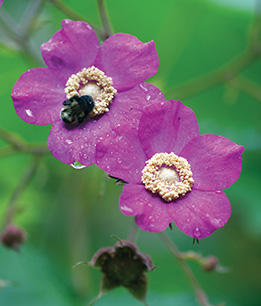
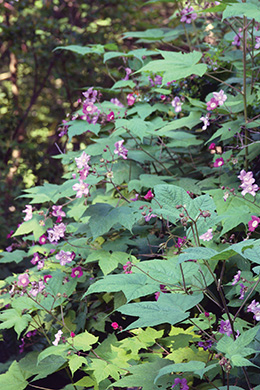
Flowering Raspberry (Rubus odoratus)
Flowering raspberry, sometimes called purple raspberry (Rubus odoratus), is quite different from the above species and deserves its own mention. It is without a doubt a tasty raspberry but from a flavor point of view most people prefer the aforementioned species. Flowering raspberry lacks the juiciness of the other species which some people prefer, though others describe it as a more intense raspberry flavor.
Where this species really shines is in its ornamental value. While there is an argument for the ornament of the above species the flowers are very short lived and the foliage is unremarkable. Flowering raspberry, on the other hand, begins flowering in the late spring and just keeps going, often flowering from June through August and into September with the second half of the flowering season being joined by the fruit.
Additionally the leaves are large and textural, similar to those of striped maple (Acer pensylvanicum) and the stems are covered in hairs instead of thorns. Unlike the above species that need good sunlight to perform well, flowering raspberry will grow into part shade. It’s spread is similar to red raspberry though it will run less in shade than in sun.
It makes a lovely informal hedge and I’ve planted it on shady roadsides/driveways to great effect.
Dan Jaffe Wilder is the director of Applied Ecology at the Norcross Wildlife Sanctuary in Wales, Mass., and a board member of the Ecological Landscape Alliance. He is the co-author of Native Plants for New England Gardens with Mark Richardson.
